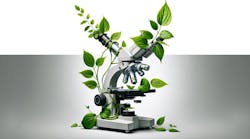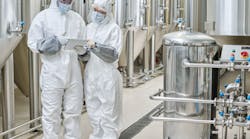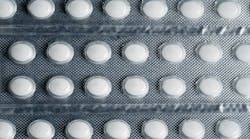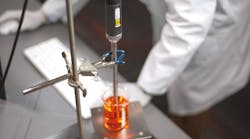The demand for therapies and vaccines is forcing manufacturers to accelerate the development of biologic antibody production processes and bring drugs to market faster. Preventing the spread of COVID-19 is the most recent example of these efforts.
But working with drug products is costly. It can be expensive to maximize or change processes once it gets approved. And the materials involved aren’t cheap. The more work that can be simulated on a computer, the more analysis is possible without disrupting a plant or a process. It makes the system more efficient.
Yet, this was not possible 10 years ago. That was when GPU, or graphical processing unit-based computing, was less robust and not capable of handling the workload. Hardware advancements have changed that, making simulations like digital twin modeling possible. This move towards digitization and digital twins is not a fad or engineering trend, but rather the way processes will be designed and optimized in the future.
Case in point: The largest pharma manufacturers have already adopted the technology, and smaller industry players aren’t far behind.
Digital twins
Digital twin packages are computer programs that use real world data to create simulations that can predict how a product or process will perform in a lab environment.
For example, top pharma firms use computational fluid dynamics (CFD) software to model momentum, energy, and mass transport within engineering and biological systems. CFD software is one of the most popular types of digital twin solution.
Digital twins organize bioprocess development, suggest experimental designs, and manage new knowledge. This drastically cuts process development costs, achieved by combining previous platform knowledge to predict future process results.
Digital twins can save manufacturers millions in a number of aspects, ranging from reducing the number of required process performance qualification (PPQ) runs to setting a robust control strategy.
The role of bioreactors
Digital twin modeling in pharma focuses on the activity within bioreactors.
Bioreactors are how drug manufacturers grow many of the medicines used in the 21st century. A bioreactor is a large, typically metal vat with an agitator at the bottom that spins. Manufacturers put in mammalian cell cultures, and as they add the gas, stir and add nutrients, these cells grow and make medicines. These are called biologic medicines.
So the bioreactor creates the curated, tailored engineered environment that maximizes the growth of cells and the development of biologic medicines. These medicines are manufactured in, extracted from, or semisynthesized from biological sources, or, in other words, living organisms.
It is common in the biopharmaceutical manufacturing process to mix two miscible liquids with differences between fluid density and viscosity. But due to the complexities of the fluids involved and engineering design limitations, manufacturers struggle to scale up production.
Engineers must understand the fluid field, the mixing, the stress, and the way the cells might hit the impeller. That informs the process outcome, much like the results of blending ingredients in a kitchen mixer is dependent on the ingredients, their physical and chemical properties, and the way it all combines. That scales up to industrial processes as well in how the fluid moves, how the ingredients mix, what sort of sheer and strain the fluid sees, what the nutrient concentrations are, and how quickly these homogenize inside the vessel.
All those process outcomes determine what sort of recipe you're going to get, with fluid mechanics and motion informing the process outcomes from the bioreactor.
Because biologics are living organisms, they have to be fed oxygen and nutrients as they grow. If you are not feeding, storing and keeping it suspended, these cells are not going to grow well or thrive, and may die. So maintaining a good fluid chemical environment is key.
Why use digital twin tools to model fluid dynamics
The ability to predict fluid mechanics using computers allows us to optimize the production of these drug product manufacturing campaigns. It is expensive to try to characterize fluid mechanics inside the opaque stainless-steel container of a bioreactor. And oftentimes the drug product itself can be expensive, so conducting physical testing can be cost prohibitive.
It can also be expensive to shut down a manufacturing line in an effort to characterize how that particular bioreactor might be forming. Being able to do simulations of a process on a computer prevents you from having to use consumables of a drug product and can provide access to information that may be difficult to measure experimentally. It is analogous to using wind tunnels to measure the aerodynamics of a car. You can test the cars to see which ones run the fastest, or use a more efficient model with wind tunnels in a systematic, controlled environment. There you can more accurately test different geometries and flow regimes to design to maximize process outcomes.
Digital twin modeling is a more direct way of getting information that would be very difficult or expensive to obtain experimentally.
How does modeling work? Experiment vs. simulation
In some sense modeling parallels physical experiments, where you start with the system geometry, the actual physical extent of the system, as well as key properties of the fluids, such as the viscosity, the density, and the reaction rates.
With an experiment, you begin with the universe and you start trying to isolate the variables that do not matter. If, for example, you are trying to weigh yourself, you might want to eliminate your coat or shoes, but the weather probably is not a variable that needs to be eliminated. The good experimentalists are those who can isolate the physics that do matter from the ones that do not.
A simulation is the opposite. In a simulation, we start with nothing and have to add physics until we appropriately reproduce the physical universe with the fidelity that matches what would happen in the lab.
And so, while experimentalists try to isolate the physical universe to be a simple repeatable system, a simulator has to construct the universe on a computer that has enough physics to reproduce with sufficient fidelity what would happen in a laboratory setting.
When starting with the simulation, you have to think about what physics you need to add to make sure that the model is representative of the physical world. That starts with geometry, physical properties and governing equations. As you add these things up, you can start to generate a model that reproduces the physical environment and makes predictions that rival what could be measured in a lab using a well-controlled experimental environment.
Methodology for studying bioreactors
The variables that matter to process outcomes include the fluid velocity, the fluid stress, the mixing property, the oxygen transfer rate from the bubbles to the liquid, the oxygen uptake rate of the cells, and the rate at which carbon dioxide is cleaned from the system. All those physical properties ultimately inform process outcomes and those are the physical properties that are typically predicted using simulation.
CFD simulation software must be validated. Validation of digital twin modeling with CFD simulation software is not the result of a test or experiment, but rather the ongoing confirmation of variables included in the simulation model. It is better characterized as systematic, ongoing validation, and a paradigm in which these models are developed.
Benefits of twin modeling in the pharma industry
The benefits can be summarized in two words: speed and efficiency. Using digital twins allows you to scale up faster and use fewer resources to achieve those ends.
It is being able to characterize what is going on inside your bench lab or production scale systems and understanding how those physics change across scale from bench to lab to production. The more insights you have into that process, the more efficiently you can take discoveries developed in the lab and scale it in production.
The better you understand what fluid mechanics dynamics would be realized inside a test tube and how those physics are supporting cell growth, the better you can replicate those physics in a 2,000 liter bioreactor. And the better you understand the nuances of oxygen transferred to your cells and the key physics driving that transport process, the stronger your simulation tool.
The more efficiently you can transfer that kind of recipe to another contract manufacturer or site, and the better you understand your process, the less trial and error and guessing and checking there is, and the more precisely you can scale up, transform and optimize your process outcomes.
So the more information you have, particularly from these types of simulations, the better you can transfer and optimize the system.
The previous state of the art of experimentation contained more uncertainty. Engineers were thinking about how to take a process developed in a lab and make it on a large production scale by adjusting variables physically and observing the outcomes.
With CFD simulation software and twin modeling, you can take the lab scale variables and reproduce the environment in the production scale before ever doing your first test. Although this technology demands hardware, software and knowledge resources, it is a movement that has taken hold of the pharmaceutical industry and will likely expand in the near future.






